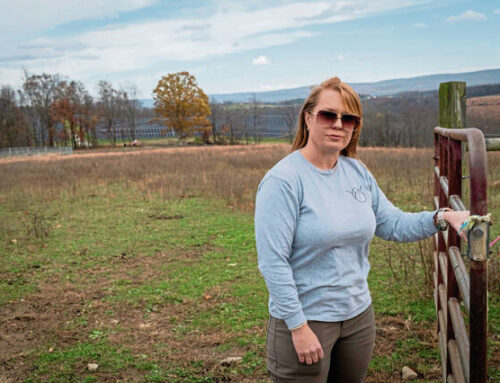Renewable energy: The key to strengthening U.S. energy security
June 12, 2025
The environmental benefits of renewable energy are well-established. Reducing hazardous pollutants gives us healthier water, land, and air. But the advantages of solar, wind, and geothermal resources also strengthen our energy security.
The global geopolitical landscape dictates prices and availability of nonrenewable fuels, exposing the U.S. economy to price shocks and uncertainties. Even when sourced domestically, nonrenewable fuels remain vulnerable to price swings driven by supply chain bottlenecks, extraction costs, and market speculation.
Technologies such as solar panels and battery storage require imported components and variable costs. But once the infrastructure is in place “fuels” — including sunshine, wind, and heat from the Earth — are domestic and free. The long term stability of renewable energy allows for better transmission planning and more confident economic forecasting.

Renewable energy is also more resilient to natural disasters. When extreme weather hits, homes and businesses with solar power and battery storage have on-site energy even while surrounding buildings face a power outage. In fact, the Southeast Sustainability Directors Network and Southface Institute relied on such a system when developing the Fulton County Resilience Hub at a Metro Atlanta library. During power outages, the system allows residents to charge their phones and plug in home medical devices.
Utilities can benefit from distributed energy resources like solar-plus-storage as well through “virtual power plant” programs. Energy demand often peaks during heat waves and cold snaps. With a virtual power plant, utilities can pull excess stored power from decentralized sources — buildings in different areas — to meet the demand. These programs lessen the amount of energy from traditional sources that they need to maintain as reserves. Rocky Mountain Power in Utah and Duke Energy in North Carolina have successfully launched virtual power plant programs, and Georgia Power is considering one during their 2025 Integrated Resource Planning process.
Faster to scale
Renewable energy can hardly be called “alternative” energy anymore. It’s a proven mainstream resource. Renewables generate a quarter of the energy in the U.S. today and continue to grow rapidly. Solar power accounted for 64 percent of all new electricity-generating capacity added to the U.S. grid last year.
When President Trump declared a national energy emergency in January, the order stated, “The integrity and expansion of our nation’s energy infrastructure — from coast to coast — is an immediate and pressing priority for the protection of the United States’ national and economic security.”
Renewable energy is well-equipped to respond to this emergency. It can scale energy capacity faster than nonrenewables due to shorter construction timelines, streamlined permitting processes, and favorable market dynamics.
A more secure energy future
The transition to a renewable energy future is not without its challenges. Integrating intermittent sources such as solar and wind into the grid requires investments in energy storage, smart grid technologies, and transmission infrastructure. But these challenges are surmountable and the ongoing benefits of increased energy security far outweigh the costs.
By embracing the stability, resiliency, and scalability of renewable energy, the U.S. can open doors to a more secure energy future. A diversified energy system that is both environmentally responsible and economically sound is the key.
Search
RECENT PRESS RELEASES
Related Post




